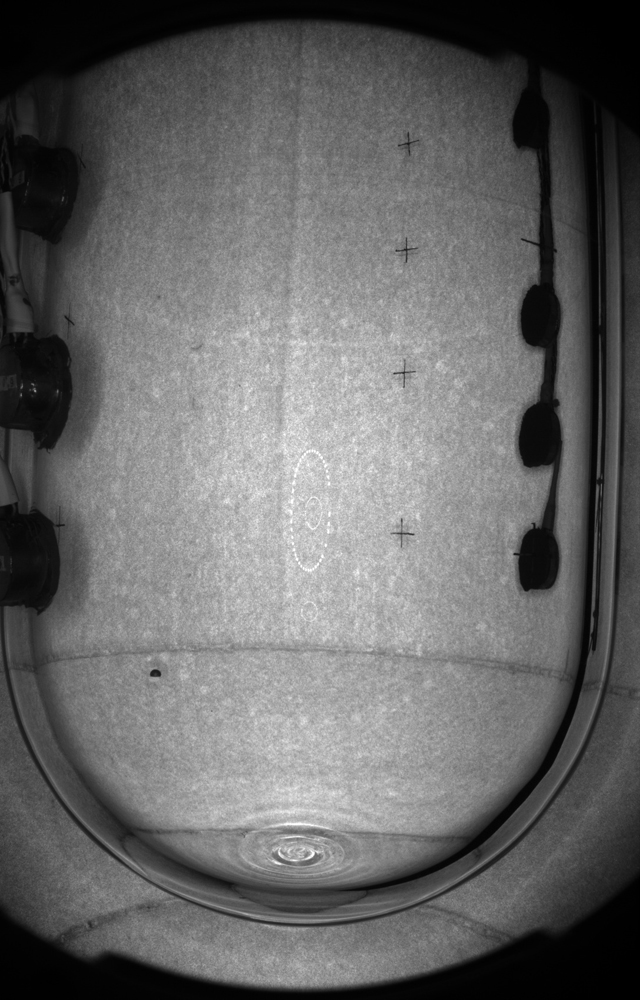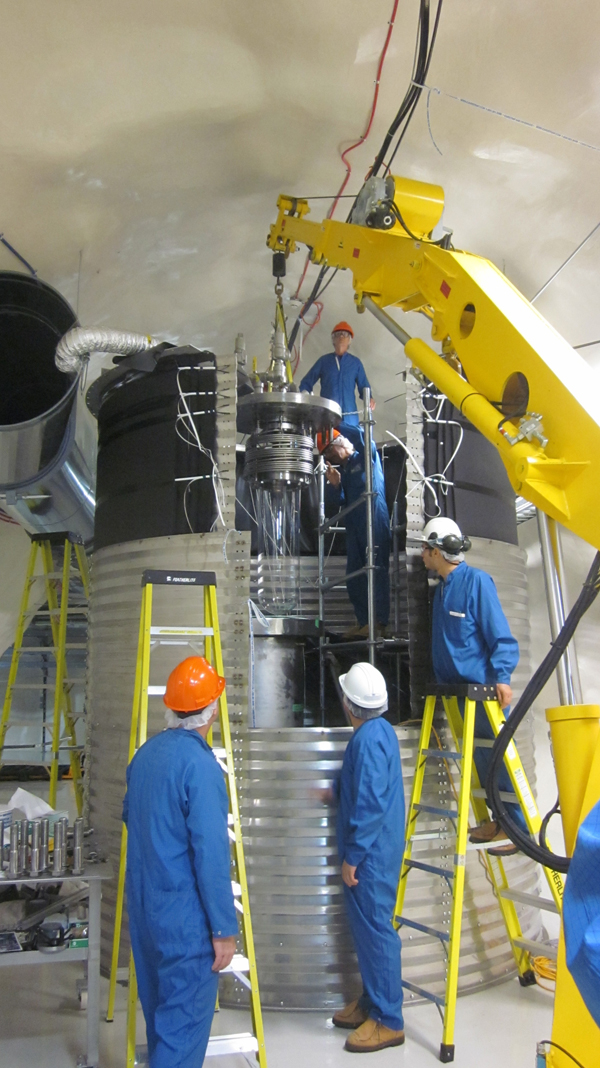New Experiment Seeks Mysterious Dark Matter Underground

A new hunt for dark matter — an invisible but bountiful constituent of the universe — is under way inside an underground laboratory a mile and half below Ontario, Canada, scientists report.
The project, called COUPP-60 (the Chicagoland Observatory for Underground Particle Physics), is a 30-liter chamber filled with 132 lbs (60 kg) of purified water and CF3I — an ingredient in fire extinguishers. The researchers hope to catch dark matter particles on the extremely rare occasions they interact with normal matter by observing bubbles formed when dark matter hits a particle in the detector.
Dark matter is thought to make up about a quarter of the universe, yet we can't see it or touch it. Its gravitational force is certainly felt, though — scientists think dark matter is the reason galaxies don't fly apart. Dark matter is likely made of an exotic type of particle that rarely collides with regular matter, so there's probably loads of it flying through you right now, passing right through the spaces between the atoms in your body without hitting anything. [Explaining Dark Matter (Infographic)]
But once in a very rare while, it should hit something, and that's what the COUPP-60 researchers are counting on.
"Our goal is to make the most sensitive detector to see signals of particles that we don't understand," Hugh Lippincott, a researcher at the Department of Energy’s Fermi National Accelerator Laboratory in Batavia, Ill., who led the installation of the detector inside the SNOLAB facility in Ontario, said in a statement.

The water inside COUPP-60 is kept at a temperature and pressure just above boiling, though to form a bubble the material requires a small extra jolt of energy. An impacting dark matter particle could provide just such a jolt, so the chamber is tuned to detect bubbles when they form.
Other particles could also hit the atoms in the detector, which is why it's buried so deep underground in an effort to shield all but the most resilient of particles from reaching it. It's also submersed in 7,000 gallons of water, which provides an extra layer of shielding. Some non-dark matter particles still get through, though, so the researchers have sophisticated methods of trying to screen out false-positive signals. True dark matter impacts should be exceedingly infrequent.
Breaking space news, the latest updates on rocket launches, skywatching events and more!
"The events are so rare, we're looking for a couple of events per year," Lippincott said.
Already the project has seen a few bubbles, but it's too soon to tell whether they were caused by dark matter or something more mundane, the scientists say.
COUPP-60 is just one of a suite of underground dark matter-hunting experiments; others include the XENON Dark Matter Project in Italy, the LUX (Large Underground Xenon) experiment in South Dakota, and the SuperCDMS (Cryogenic Dark Matter Search) experiment in Minnesota. There's even a particle detector installed on the International Space Station called the Alpha Magnetic Spectrometer that hopes to find the elusive stuff. Some of these experiments have been running for years, but none have yet found a reliable dark matter signal. The detectors are continually being updated to become more and more sensitive, so that could change in the near future, though.
Follow Clara Moskowitz on Twitter and Google+. Follow us @Spacedotcom, Facebook and Google+. Original article on SPACE.com.
Join our Space Forums to keep talking space on the latest missions, night sky and more! And if you have a news tip, correction or comment, let us know at: community@space.com.

Clara Moskowitz is a science and space writer who joined the Space.com team in 2008 and served as Assistant Managing Editor from 2011 to 2013. Clara has a bachelor's degree in astronomy and physics from Wesleyan University, and a graduate certificate in science writing from the University of California, Santa Cruz. She covers everything from astronomy to human spaceflight and once aced a NASTAR suborbital spaceflight training program for space missions. Clara is currently Associate Editor of Scientific American. To see her latest project is, follow Clara on Twitter.
